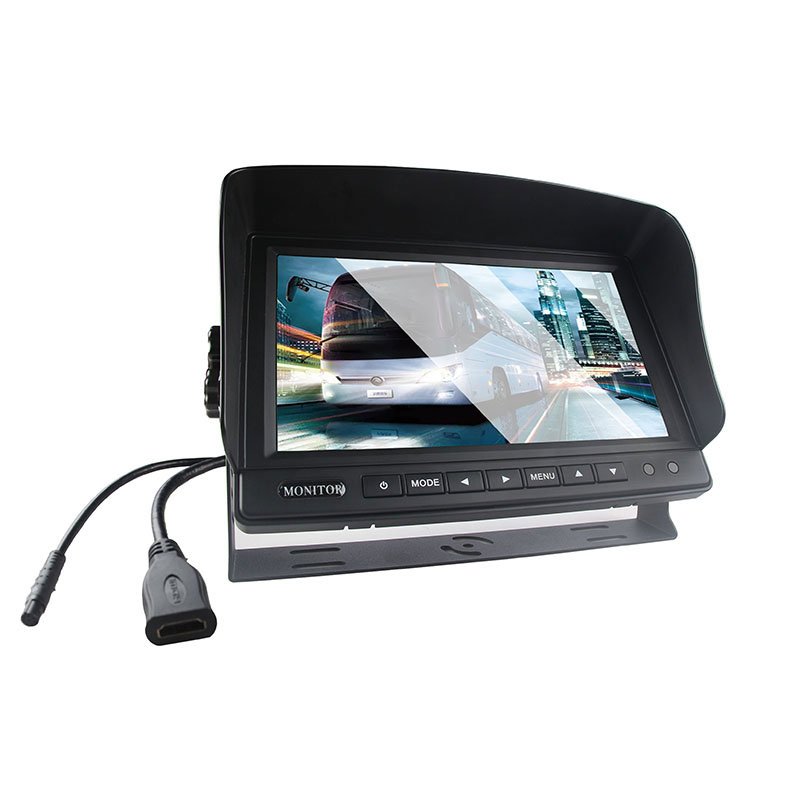The Rise of HD Monitors: A New Era of Visual Excellence
2025-03-12
In today’s digital world, screens are an essential part of our daily lives. Whether we’re working on a computer, watching movies, gaming, or simply browsing the web, the quality of the display significantly impacts our experience. One of the most significant advancements in display technology in recent years has been the rise of HD (High Definition) monitors. In this blog, we will explore what HD monitors are, their benefits, and why they have become the go-to choice for users worldwide.
What is an HD Monitor?
An HD monitor is a display screen that offers a higher resolution compared to standard definition monitors. Resolution refers to the number of pixels that make up the image on the screen. HD monitors typically offer a resolution of 1280 x 720 pixels or 1920 x 1080 pixels, commonly known as 720p and 1080p, respectively. These resolutions provide a sharper, more detailed image, allowing users to enjoy content with greater clarity and vibrancy.
Types of HD Monitors
- 720p (HD): This is the basic form of HD resolution, with 1280 x 720 pixels. It’s often used for smaller screens, such as those found in budget TVs or older monitors.
- 1080p (Full HD): The most common HD resolution for modern monitors, offering 1920 x 1080 pixels. It provides a clear, crisp picture and is suitable for a wide range of tasks, from work to entertainment.
- 1440p (Quad HD): With a resolution of 2560 x 1440 pixels, 1440p monitors are often seen as a middle ground between Full HD and 4K, providing a higher level of detail without the need for the powerful hardware required by 4K displays.
- 4K (Ultra HD): With a resolution of 3840 x 2160 pixels, 4K monitors provide an incredibly detailed picture. While not strictly a "HD" monitor, 4K is considered an ultra-high-definition display, offering four times the resolution of 1080p.
Why Choose an HD Monitor?
1. Better Image Quality
The most obvious benefit of an HD monitor is the superior image quality. Higher resolution means more pixels, which translates to more detail. This is especially important for activities such as photo editing, graphic design, gaming, and watching high-definition movies. With an HD monitor, you can enjoy sharp, clear images with vibrant colors and fine details that would be lost on lower-resolution displays.
2. Enhanced Productivity
For professionals who work with detailed graphics or need to view multiple windows side by side, an HD monitor can significantly improve productivity. The increased screen resolution allows for more on-screen space, which is especially beneficial for tasks like video editing, programming, and web development. The ability to see more content at once without scrolling or resizing windows can make your workflow more efficient.
3. Immersive Entertainment Experience
Whether you’re watching movies, streaming TV shows, or playing video games, an HD monitor offers a more immersive experience. Movies and games designed in HD or 4K resolution look their best when viewed on a monitor capable of displaying their full potential. The increased clarity and detail make the visuals more lifelike, adding to the overall enjoyment of the experience.
4. Affordable and Accessible
As technology has advanced, HD monitors have become increasingly affordable. Full HD monitors, in particular, are now budget-friendly, making it easy for users to upgrade to a higher-quality display without breaking the bank. Even entry-level HD monitors provide a significant improvement in image quality compared to older, standard-definition monitors.
5. Energy Efficiency
HD monitors, particularly LED-backlit models, are more energy-efficient than older CRT (Cathode Ray Tube) monitors. These monitors consume less power while still providing vibrant visuals, making them an eco-friendly option for those looking to reduce their energy consumption.
6. Versatility
HD monitors are suitable for a wide range of applications. Whether you’re using them for work, gaming, media consumption, or design work, an HD monitor is a versatile choice that meets the needs of most users. Many models also come with additional features such as adjustable stands, built-in speakers, and multiple connectivity options (such as HDMI and DisplayPort) to enhance the user experience.
Key Features to Consider When Buying an HD Monitor
While the resolution is one of the most important factors to consider when choosing an HD monitor, there are other features that can enhance your experience:
1. Panel Type
There are several types of panels used in HD monitors, including IPS (In-Plane Switching), TN (Twisted Nematic), and VA (Vertical Alignment). IPS panels offer the best color accuracy and wider viewing angles, making them ideal for designers and content creators. TN panels, while faster in response time, have limited color accuracy and viewing angles but are often preferred by gamers. VA panels provide a good balance between contrast ratio and color performance.
2. Refresh Rate
For gaming or fast-paced video content, a higher refresh rate (measured in Hertz, Hz) can make a noticeable difference. While most monitors have a 60Hz refresh rate, gaming monitors often feature 120Hz, 144Hz, or even 240Hz refresh rates, which provide smoother motion and reduce motion blur.
3. Connectivity Options
Make sure the monitor has the necessary ports for your devices. HDMI is the most common connection type, but some monitors also support DisplayPort, USB-C, and VGA. Additionally, some monitors offer USB hubs for convenient connection to peripherals like keyboards, mice, and external storage devices.
4. Ergonomics
Look for monitors with adjustable stands or VESA compatibility to ensure comfort during extended use. Adjustable height, tilt, and swivel options can help you find the optimal viewing angle and reduce strain on your neck and eyes.
Conclusion
HD monitors have become an essential tool for users across the world, providing better image quality, improved productivity, and a more immersive entertainment experience. Whether you’re working on a design project, playing games, or simply watching your favorite shows, an HD monitor enhances every aspect of your digital experience. As technology continues to evolve, the quality and affordability of these monitors will only continue to improve, making them an excellent investment for both personal and professional use.



